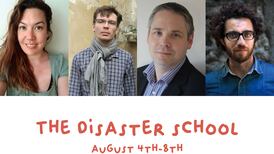In Drogheda tonight there is an event that is both delightful and deeply puzzling. Mick Moloney’s brilliant group The Green Fields of America will play the TLT Concert Hall & Theatre as part of the Johnstons Folk Music Festival.
It is a delight because Moloney is, or should be, a national treasure. It is a puzzle because tonight's performance is the first in Ireland by a group (or, perhaps more accurately, a shifting collective) that has been at the heart of Irish culture in the US since the 1970s. The Green Fields is at once enormously influential and oddly marginal – a contradiction that hints at a continuing unease about the place of the diaspora in Irish culture.
The quickest way to get a sense of the influence of the Green Fields is to read some of the names that have been associated with it over its 35 years of existence so far: Michael Flatley, Jean Butler, Seamus Egan, Eileen Ivers, Joanie Madden, Dennis Cahill, Liz Carroll.
Moloney's outfit has been a staging post, proving ground and launch pad for almost everything that has happened in the vigorous world of Irish-American traditional music since the 1970s. Those energies have fed into Irish popular culture, most obviously through Riverdance. Yet there seems to be some reluctance to fully acknowledge Moloney's achievement, perhaps because it complicates a cherished cultural category: the idea of the traditional.
Moloney was a member of the pioneering folk group The Johnstons in the 1960s. He emigrated to the US in 1973. For the Bicentennial Festival of American Folklife, in 1976, he put together a huge ensemble, pioneering the idea of having Irish dancers perform alongside traditional musicians. From that emerged The Green Fields of America.
To say the project has been in part scholarly and historical makes it sound misleadingly dry. Moloney’s groups are joyful and immediate. But his scholarship matters greatly. What makes his work unique is its steady exploration not just of the Irish musical tradition but of what happened to that tradition in the urban, multicultural, commercial context of the US.
Moloney's achievement has been to challenge fatuous stereotypes without resorting to heroic stereotypes. There is a debased Irish-American notion of musical Irishness, hung between the sentimentality of Danny Boy on the one side and the ethnic rallying cry of "rebel" ballads on the other. Instead of merely patronising those who cling to these notions, Moloney worked to give them something better: a rich and rigorous presentation of the legacy of Irish music and song.
It would have been easy, especially for an Irish-born singer and musician, to adopt a tone of superiority, to insist on Irish cultural “authenticity” as the antidote to Irish-American debasement. He could have fallen into a well-worn mental groove: the native Irish have the pure drop, the Irish-American experience has adulterated it with vulgar commercialism, and the task, therefore, is to restore the purity of the original impulse.
Moloney’s importance and originality lie in his insight that there was a third way to approach a diaspora culture. Beyond sentimentality or puritanism was a different kind of authenticity: the truth of the Irish-American cultural experience itself. He began to place the living tradition of Irish dance music alongside the enormous variations in that tradition under the pressures, and through the opportunities, of American life.
The reality of the Irish-American experience is that it includes both remarkable continuity and radical change. Songs and dance tunes from Ireland survive more or less intact, though even with fiddle music the local styles of playing merged into a new “national” style. But change came in both content and form.
Moloney has given life, for example, to songs of the American Civil War like Pat Murphy of the Irish Brigade. He has also celebrated the vaudeville songs of Ed Harrigan, who put Irish tenement life on the New York stage and is a founding figure of Broadway.
This new content goes hand in hand with ventures outside of the Irish ethnic ghetto. Moloney has explored the work of Dan Emmett, one of the most influential figures in blackface minstrelsy, who mixed Irish and African-American music. He has also made a fabulous and startling record with the Green Fields called If It Wasn't for the Irish and the Jews. It explores the songs of the original Tin Pan Alley, in which Irish and Jewish songwriters often collaborated. Sometimes it was difficult to say which was which: William Jerome changed his name from Flannery when the Jewish influence became dominant, Eddie Foy was actually Edwin Fitzgerald, and George M Cohan (Keohane) was often assumed to be Jewish.
This diversity is as traditional, authentic and Irish as a sean-nós ballad sung in Gaelic in Connemara. Moloney and the Green Fields celebrate both the continuity and the change that form the heritage of Irish music. In what is again an emigrant culture, they deserve to be welcomed home.
Tickets for tonight's concert are available from thetlt.ie and 041-9878560
fotoole@irishtimes.com













